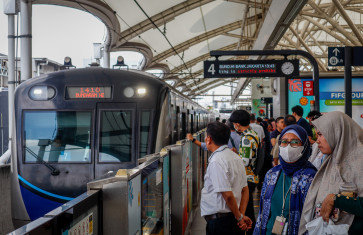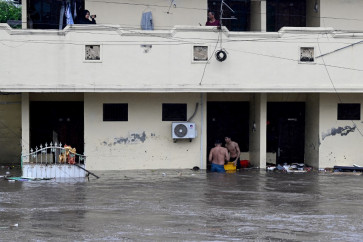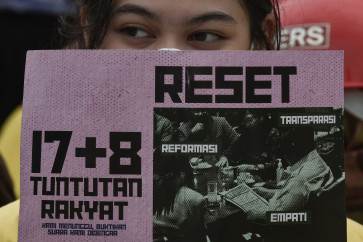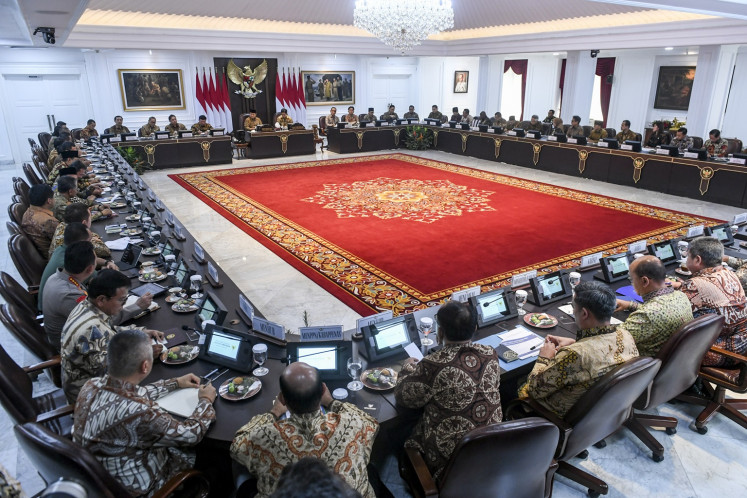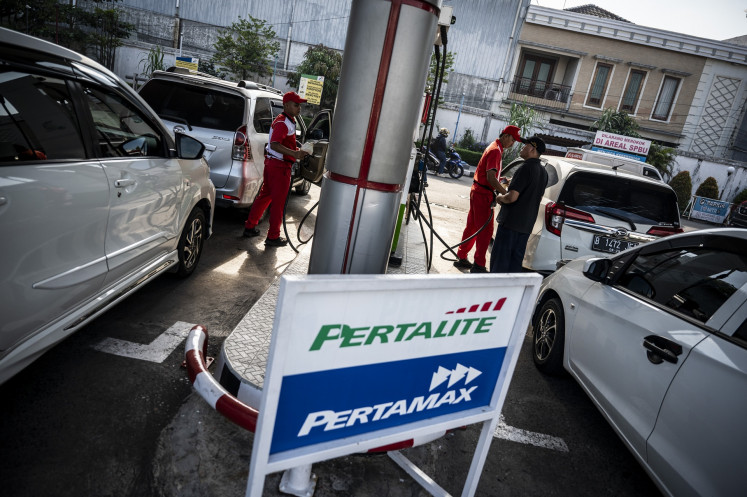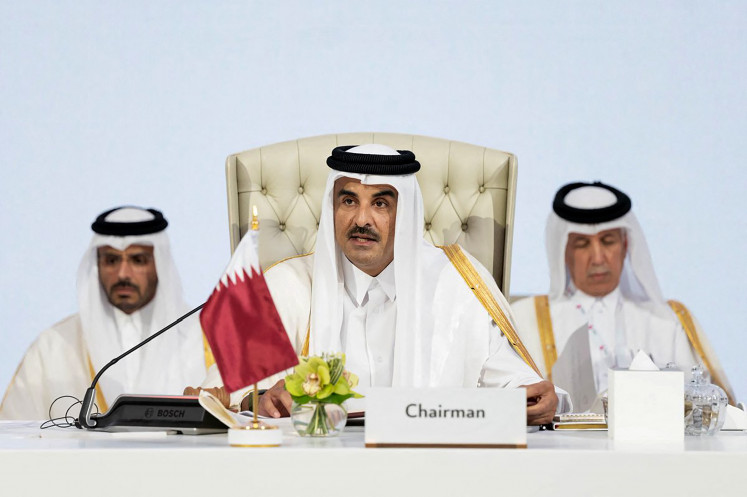Popular Reads
Top Results
Can't find what you're looking for?
View all search resultsPopular Reads
Top Results
Can't find what you're looking for?
View all search resultsThose who risk their life for a living
In commemoration of May Day, the Antara Journalistic Photo Gallery (GFJA) has organized a photo exhibition featuring the laborers working at Ijen Crater in Banyuwangi, East Java
Change text size
Gift Premium Articles
to Anyone
I
n commemoration of May Day, the Antara Journalistic Photo Gallery (GFJA) has organized a photo exhibition featuring the laborers working at Ijen Crater in Banyuwangi, East Java.
Dubbed “The Kawah Ijen’s Warriors”, the exhibition features 87 chosen frames by five photographers: Andi Ari Setiadi, Barmen Simatupang, Budi Chandra, Mahatma Putra and Panji Wijaya. All are alumni of the gallery’s photography class.
Sulfur exploration Courtesy of Andi Ari Setiadi
Budi Chandra, a photographer, said the idea to organize the exhibition came when four (minus Panji) made a brief visit to Ijen Crater last year. They returned to the crater in March this year. This time, Panji joined as a cameraman.
“Ijen’s sulfur is one of the best sulfur in the world. The people live there should be prosperous. But the reality is the opposite. We hope that this exhibition draws public attention to the lives of laborers,” Budi said.
Located 2,368 meters above sea level, Ijen Crater lies inside the high caldera wall, which contains an amazing and exotic natural wonder, the green colored Ijen Lake. The lake, which has zero acidity level, is 200 meters deep and has a volume of 40 million cubic meters.
“Ijen” is the local word for “alone”, a perfect description of the way a person feels when staying there.
The beauty of Ijen Crater and Ijen Lake often makes people forget the grim lives of the sulfur porter laborers who work in the area.
Amid the fog of sulfur that clouds Ijen Crater, hundreds of laborers must take the 4.5-kilometer steep track on foot. Each laborer carries two bamboo baskets filled with sulfur weighing 75-110 kilograms, much heavier than the 50 kilograms the ILO required.
The labors may have the sturdy looks, but the sounds of the heavy bamboo baskets against their bony shoulders and their gasping breath are the honest testimony of their condition.
From the cashier, they receive a payment of Rp 600 (6 US cents) for each kilogram of sulfur they carry there. The payment they receive does not measure up to the risks they endure: the steep track they must pass on foot and the poisonous sulfur gas that affects the respiration system.
The sulfur carriers, the main focus of the photo exhibition. Courtesy of Andi Ari Setiadi
With the photographers staying in the laborer’s abodes during the photo shoots, the photos not only show the workplace but also glimpses of the laborers’ daily lives.
For example, one photo shows the blistered toes of a laborer, while another shows how a laborer straps layers of fabric to protect their feet and faces, which are still not sufficient safety measures.
The exhibition also puts the colorful faces of the laborers into the grim story. There is Aan, a worker living on the outskirts of Banyuwangi, who carries 70 kilograms of sulfur twice in a day’s work.
Sometimes, he added, if he felt well enough, he forced himself to carry three times as much. He did that in order to receive sufficient payment for his family back home.
Another frame shows Karmo, a 55-year-old man who has carried sulfur for 40 years. Despite the humble life he leads, Karmo is has a cat called Manil. A person who wanted to buy Manil for Rp 200,000 ($20), known as a huge sum for a cat. However, Karmo refused to part with the feline, saying that Manil and he were friends.
Oscar Motuloh, a renowned photographer and the curator of the exhibition, mentioned in his foreword that the photo exhibition was to honor the egalitarian struggle of laborers worldwide.
Grim as it is, the photos of Ijen Crater’s laborers will show people their simple and humble lives, without hypocrisy and pseudo images. The exhibition will run until May 17.
GFJA
Jl. Antara No. 59
Pasar Baru - Jakarta 10710
Phone: 021 3458771



